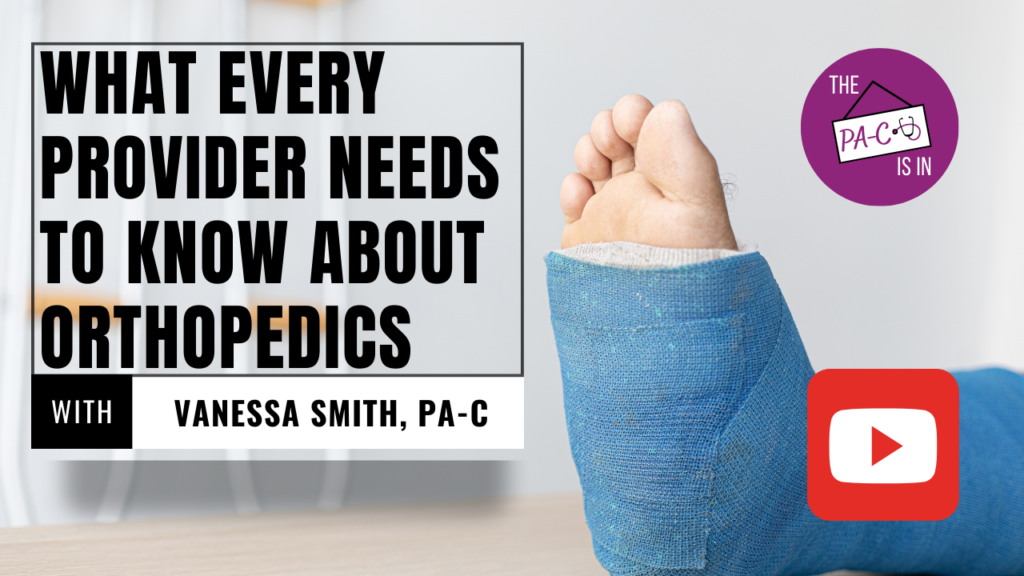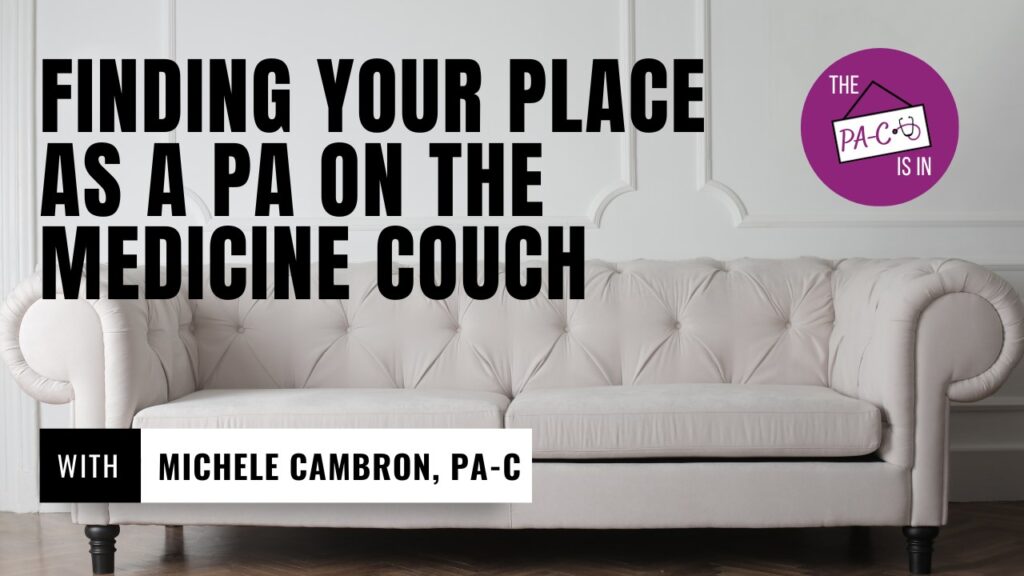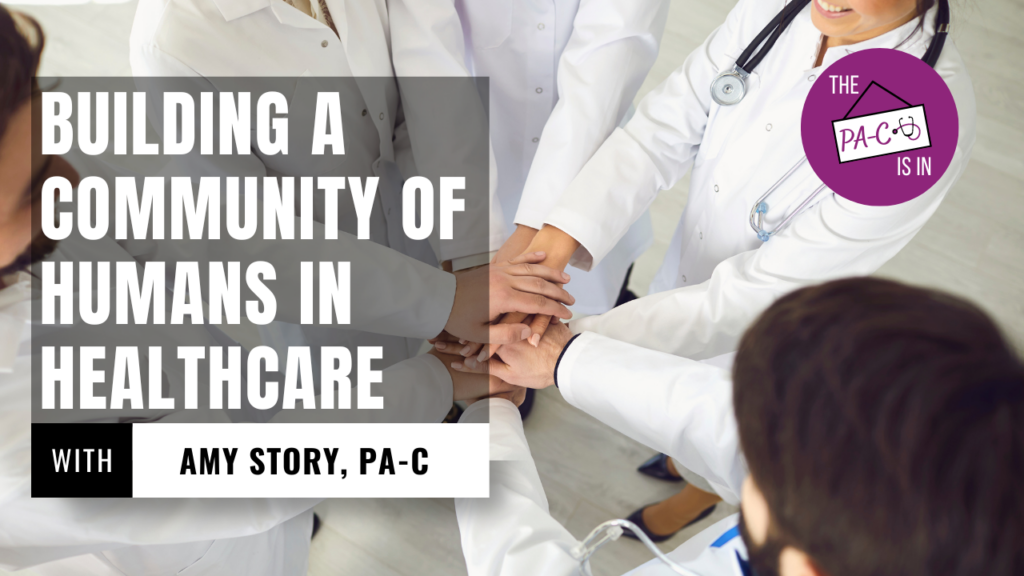Do you need a little refresher on ortho? Are you a primary care, urgent care, or ER provider who sees a lot of orthopedic conditions in your practice but can never quite remember if you’re supposed to splint or not splint, use lidocaine with epinephrine or not, or how many X-ray films you’re supposed to order? You’re in the right place!
My guest on the podcast today is Vanessa Smith, a PA in Orthopedic Hand Surgery. She found her passion for orthopedics while on an ortho rotation in PA school and started working in hand surgery right after graduation.
Tune into The PA Is In where Vanessa shares several clinical pearls that she’s learned in her 14 year career. She also dives into exactly what the non-orthopedic provider needs to know when treating orthopedic injuries and conditions. We discuss tips and tricks for non-surgical interventions as well as how to appropriately refer to ortho.
APPLE PODCASTS | SPOTIFY | YOUTUBE
Vanessa also introduces OrthoRefresh.com, a website dedicated to giving PCPs and non-ortho providers a refresher on how to treat common orthopedic injuries. OrthoRefresh contains several resources, including short videos by prominent ortho specialists to educate and equip PCPs to effectively treat orthopedic complaints.
In episode 244 of The PA Is In, Vanessa shares a fantastic overview of treating common orthopedic injuries and conditions in an approachable and easy to understand manner. Whether you’re a seasoned practitioner or new to the field, this episode serves as a reminder of our collective commitment to lifelong learning and the pursuit of excellence in patient care. Vanessa’s journey underscores the importance of specialization, the art of listening, and the impact of comprehensive care on patient recovery and satisfaction.

The Importance of Hands
Vanessa did an ortho rotation in PA school where she covered spine surgery, total joint replacements, foot and ankle, sports medicine, and hand surgery. She found a passion for hand surgery above all.
Vanessa says that hands and fingers are so important. Everyone uses their hands, regardless of what your career is. Hands are essential to functioning in everyday life. Our hands are a part of who we are. For patients that have lost a digit or digits, that impacts their psyche and how they feel as a human being. It’s important that the PA listens to the patient and provides psychosocial support.
Pearls for the Non-Orthopedic Provider
PAs are lifelong learners – we will always be learning and we need to keep learning. Here are Vanessa’s top pearls for the non-ortho provider.
X-rays
- Get x-rays of the specific body part that was injured. If a finger was injured, get finger x-rays, not a 3-view hand. If a wrist was injured, get wrist x-rays, not a forearm x-ray. Ask the patient to point to where they feel the most pain and get a specific dedicated x-ray of that body part.
- If you order x-rays, look at them! Don’t dismiss a patient until you’ve look at the x-ray yourself, even without the radiology report. Nondisplaced fractures can become displaced if they are not immobilized. If you see something grossly abnormal, you need to immobilize it.
- If you push on something or reduce a fracture or joint, then you need to get post-reduction films.
Splinting
- Place a splint for a fracture or lacerations where you are concerned about tendon or nerve laceration. Ex. palm, volar finger, dorsal hand or fingers.
- What if the x-ray is normal but the patient is complaining of severe pain or there is lots of swelling? The patient will feel more comfortable in something. The splint you put on (cotton cast padding, fiberglass splint, and elastic bandage) is usually better than one off the shelf.
- Splinting is never a bad idea. You can never go wrong splinting someone. If it turns out they didn’t need it, it won’t hurt a patient to have worn a splint.
Digital Block
- The old adage “no epinephrine in fingers, nose, penis or toes” has been debunked. Epinephrine is safe in the fingers. Lidocaine with epi can provide an awesome digital block without traumatizing the patient. The key to lido with epi is to give it time. Local anesthesia for a digital block needs at least 20 minutes. Then it will be numb and you can continue the procedure.
- Patients either hate being poked so much for continued numbing that’s not working that they tell the provider to just suture without any anesthesia or they are so traumatized that they refuse hand surgery with local anesthesia and insist on general. Giving more anesthesia than necessary increases risk unnecessarily.
- That first evaluation will set the tone for the entire management of this injury. Vanessa has a free talk on OrthoRefresh.com about how to do a digital block simply but effectively.
Non-Surgical Interventions
Most orthopedic care is non-surgical. Before referring a patient to ortho, offer conservative treatment. PT/OT is a mainstay of treatment for ortho conditions.
- Rotator cuff pain, bursitis, tendonitis : 6 weeks of formal PT. Even with a rotator cuff tear, PT is the treatment. Patients may not need surgery at all.
- Cubital tunnel syndrome: wrap or splint the elbow when sleeping. Discuss with the patient how sleeping position affects daytime symptoms.
- Basilar thumb arthritis: wear splint for thumb arthritis during the day or when hand is in use, heating modalities, topical creams, NSAID. Make sure to explain to patients how and when to take Tylenol/Ibuprofen.
OrthoRefresh
Vanessa created OrthoRefresh as a way to combine teaching and medicine. She was the first PA on the board of directors for the American Association for Hand Surgery. In this role, Vanessa met hand surgeons from around the world.
Providers in family medicine, ER, occupational medicine, and acute care need to know so much ortho care. Ortho is one-third of all chief complaints. However, ortho is not that prevalent on the boards for PAs, NPs, or physicians. Therefore, it’s not talked about or studied in depth during school.
OrthoRefresh is a website that is a library of talks meant to fill the gap providers have between their lack of knowledge and their need to provide orthopedic care. It is a refresh on what to do for specific ortho complaints. Providers can find ongoing educational content without having to go to a conference. There are short 8-20 minute talks focused on what PCPs need to know. The purpose of OrthoRefresh is to educate and equip PCPs to evaluate and manage nonoperative treatments for ortho conditions and injuries.
OrthoRefresh includes a paid membership option, free how-to videos accessible to everyone, and a newsletter.
Connect with Vanessa
- Website: www.OrthoRefresh.com
- Instagram: https://www.instagram.com/orthorefresh
- Facebook: https://www.facebook.com/OrthoRefresh
- YouTube: https://www.youtube.com/@OrthoRefresh
Other Posts and Videos You’ll Love
Episode 229: Finding Your Place as a PA on the Medicine Couch: Listen to the Podcast | Watch on YouTube | Read the Blog

Episode 240: Make Your Dream Life a Reality: Listen to the Podcast | Watch on YouTube

Episode 271: Building a Community of Humans in Healthcare: Listen to the Podcast | Watch on YouTube

Episode 274: Living Life to the Fullest as a PA: Listen to the Podcast | Watch on YouTube
